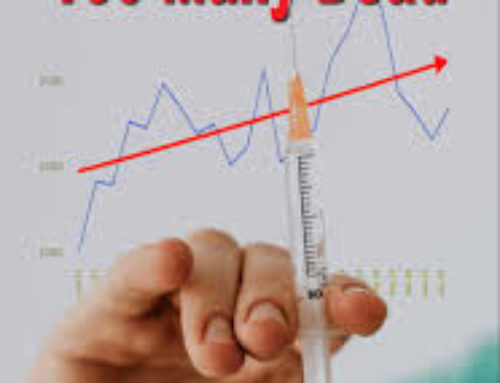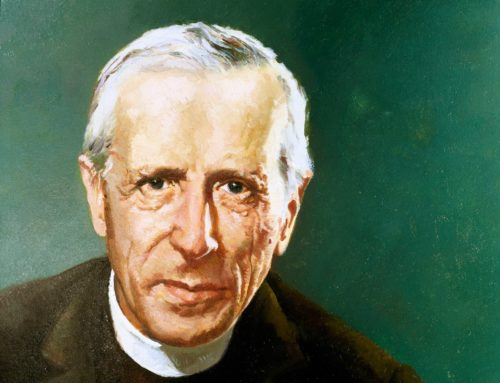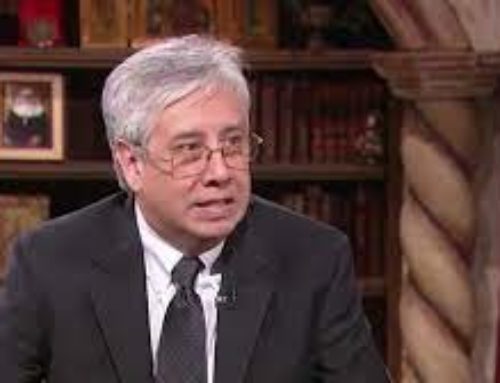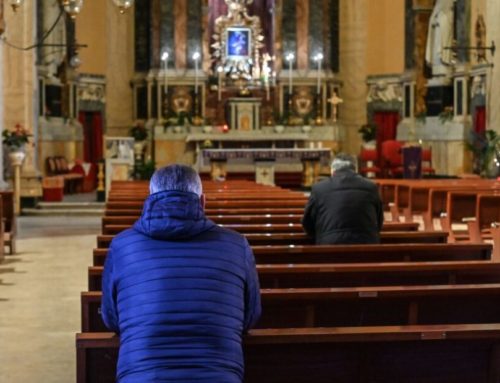COVID-19 Policy-Making in a Country Divided: Catholic Social Teaching as a Path to Unity
Anthony T. Flood, PhD
Paul J. Carson, MD
First Published August 10, 2020 Research Article
https://doi.org/10.1177/0024363920942431
| Article information |
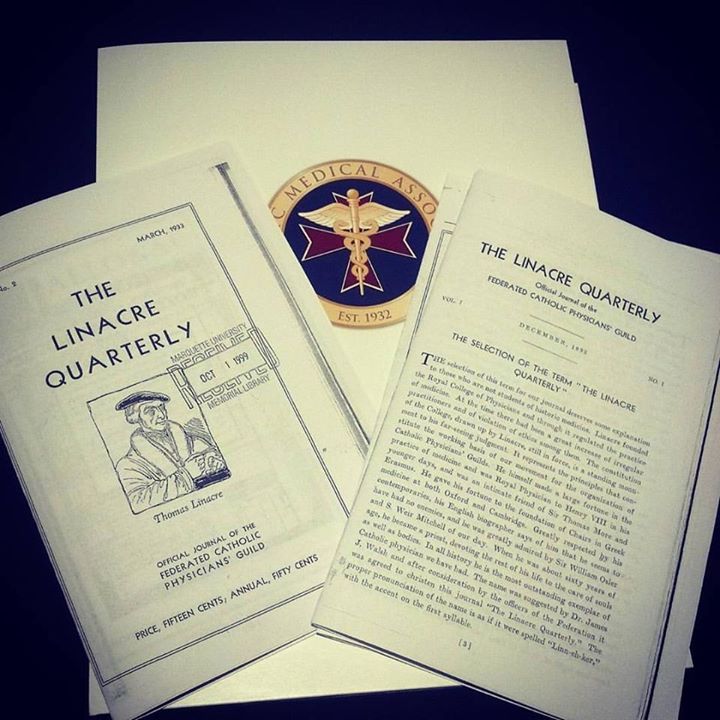
Abstract
Because no vaccines or specific treatments are available, governments around the globe have responded to the Coronavirus Virus Disease 2019 (COVID-19) pandemic with a variety of nonpharmaceutical interventions (NPIs) that include sheltering-in-place orders, social distancing, and school and business closures. While the actual and potential harm due to COVID-19 is far more severe than influenza, the harms due to the NPIs—that have clearly reduced mortality due to COVID-19—are also significant. With government-ordered “lockdowns” across the globe, many arguments for and against returning to normal social and economic activity have been reported, and in fact, Americans are divided about how and when to “open up.” These arguments seem to fall into two major categories. Utilitarianism suggests that suspension of civil liberties and constitutional rights is a necessary response, while Libertarianism supports individual decision-making and greatly reduced government mandates. Protesters around the country have been vocal about one or the other points of view. First, we consider in detail the potential harms of severe acute respiratory syndrome virus-2 if left unchecked by NPIs. Second, we look at harms due to restricted social and economic activity on human morbidity and mortality. Finally, we offer a framework based on the pillars of Catholic Social Teaching and the principle of double effect that offers a more humane solution than Utilitarian or Libertarian principles alone.Keywords Catholic social teaching, COVID-19, Influenza, Nonpharmaceutical interventions, Principle of double effect, Public health, Public policy, SARS-CoV-2
Introduction
A novel coronavirus, ultimately named severe acute respiratory syndrome virus-2 (SARS-CoV-2), was first officially recognized in a cluster of pneumonia cases (now referred to as Coronavirus Virus Disease 2019 [COVID-19]) in Wuhan, Hubei Province, China, in December 2019 and January 2020 (Li et al. 2020). In less than three months, this virus spread throughout the world leading to a formal declaration of a global pandemic by the World Health Organization (WHO) on March 11, 2020. By late March, the epicenter of the disease had shifted from Asia and Europe to the United States where more than 3.1 million cases and 128,000 deaths have been reported online (Johns Hopkins COVID resource Center as of July 9, 2020). In the United States, Centers for Disease Control and Prevention (CDC) data confirm that during each of the first three weeks reported in April 2020, COVID-19 took the lives of 22 percent to 37 percent more Americans than expected based on historical averages.
Because there is no vaccine or specific medical treatment for COVID-19 yet, public health efforts have had to rely on both traditional and nontraditional measures collectively known as nonpharmaceutical interventions (NPIs) to stem the tide of disease. These NPIs ranged from traditional case finding, contact tracing, and school and business closures, to less traditional shelter-in-place orders and severe travel restrictions. The initial goals of these NPIs were to gain time for the medical community to develop vaccines and treatments, to bolster our supplies of personal protective equipment, and to prevent hospitals and intensive care units from being overwhelmed with patients. As these goals have been slowly achieved, the focus has shifted to preventing morbidity and mortality.
Although it is clear that these NPIs have helped “flatten the curve” and have led to a falling incidence of disease in most areas of the world, it is not clear whether all of these NPIs were necessary to achieve this goal, and which are essential (Lai et al. 2020). There is now growing concern that the collateral damage from the unintended consequences of these NPIs may be outweighing their protective benefits.
This has led to heated exchanges among national and state government leaders, news media personalities, and ordinary Americans across the country. Unemployment reached 14.7 percent (up from a pre-pandemic 3.5 percent) for the week ending May 9, 2020, according to the Bureau of Labor Statistics webpage. Suicide and drug overdose deaths are known to increase with unemployment. Moreover, tens of millions of Americans have foregone important medical care. Social isolation leads to not only anxiety and depression but also increased risks of death from physical problems.
Protesters all over the country have marched on state governments to demand reopening the country (Axelrod 2020). In an attempt to find simple solutions to complex problems, many Americans believe that the pandemic is “fake news” and subscribe to various conspiracy theories involving Anthony Fauci, Bill Gates, and/or 5G towers weakening our immune systems (Collins 2020). Many believe that being a true American patriot means opening up the economy as soon as possible, as the Open The States website urges (www.openthestates.com). However, as of May 5, 2020, two-thirds of surveyed Americans were fearful that states are opening economic activity too soon and that many American lives will be sacrificed (Monto et al. 2020). Many respectful Catholics who missed the public celebration of Mass and reception of the sacraments formally petitioned bishops, through the We Are An Easter People website (www.weareaneasterpeople.com) to bring the mass and sacraments back to the faithful as quickly as possible during the pandemic. There seem to be major fault lines between groups emphasizing either of two competing goods: the prevention of morbidity and mortality from COVID-19, and the opening up of social movement and businesses to save livelihoods, relationships, and health care that is unrelated to COVID-19.
While there are a variety of philosophical and religious principles and worldviews from which one could draw for guidance during this unprecedented intersection of ethical, social, and medical concerns, we note the overwhelming prevalence of Libertarian or Utilitarian principles underlying arguments in this debate. Someone with Libertarian principles might view these matters through the lens of individual rights and threats of governmental overreach. Public health and common good considerations take a back seat to individual liberty. On the other hand, Utilitarians support treating society and matters of public health as being far more important than curtailing individual freedoms.
Both of these approaches have their merits but also come with their own risks and dangers. We examine the spectrum of risks both from the virus and from the various measures being implemented to control the virus, and then we offer a third way forward that respects and incorporates the key values of both Libertarian and Utilitarian approaches but one that also offers greater moral clarity, flexibility, and practical guidance. This way is found in the moral and social teaching of the Catholic Church that reminds us to respect human dignity and to be mindful of our nonnegotiable responsibilities toward the common good.
The Virus
SARS-CoV-2 belongs to a family of human coronaviruses that includes four circulating strains (229E, HKU1, NL63, and OC43) that primarily cause mild seasonal upper respiratory infections predominantly in children.(Monto et al. 2020) Two prior novel coronaviruses, severe acute respiratory syndrome-1 (SARS-CoV-1) and Middle East respiratory syndrome (MERS) caused limited human epidemics, predominantly in Asia and the Arabian Peninsula respectively, with high case fatality rates (CFR). These viruses likely originated from enzootic bat coronaviruses that spread to intermediary mammals and from there to humans (de Wit et al. 2016).
SARS-CoV-2 is similarly thought to have originated in bats, moving to an as yet unidentified intermediary host, and then making the jump into humans (Andersen et al. 2020). SARS-CoV-2 and the original SARS-CoV-1 viruses share about 80 percent genetic homology, and SARS-CoV-2 has almost 96 percent homology with a known bat coronavirus (Zhou et al. 2020), although it differs significantly at the ACE2 receptor-binding domain (Andersen et al. 2020). A densely populated city such as Wuhan, China, where large numbers of people shopped for specialty food items in live wet-markets in preparation to celebrate the Chinese lunar new year, provided an ideal set of conditions for the introduction of an animal virus into a human host. Indeed, 64 percent of the earliest identified cases had direct exposure to one of these markets (Li et al. 2020). Since the initial outbreak investigation, the acquisition of SARS-CoV-2 has been shown to cause a wide spectrum of clinical manifestations, collectively named Coronavirus Virus Disease 2019 (COVID-19) by the WHO on February 11, 2020.
In order to begin asking the questions about what control measures are appropriate and proportionate to employ against this pandemic, it is important to understand the extent of the threat that it poses. To understand that threat, we need to focus on several elusive epidemiologic measures that reveal the virus’ infectiousness and virulence: the reproductive number (signified as R0), the attack rate, the CFR, the infection fatality rate (IFR), and herd immunity (summarized in Table 1):
https://journals.sagepub.com/doi/full/10.1177/0024363920942431


